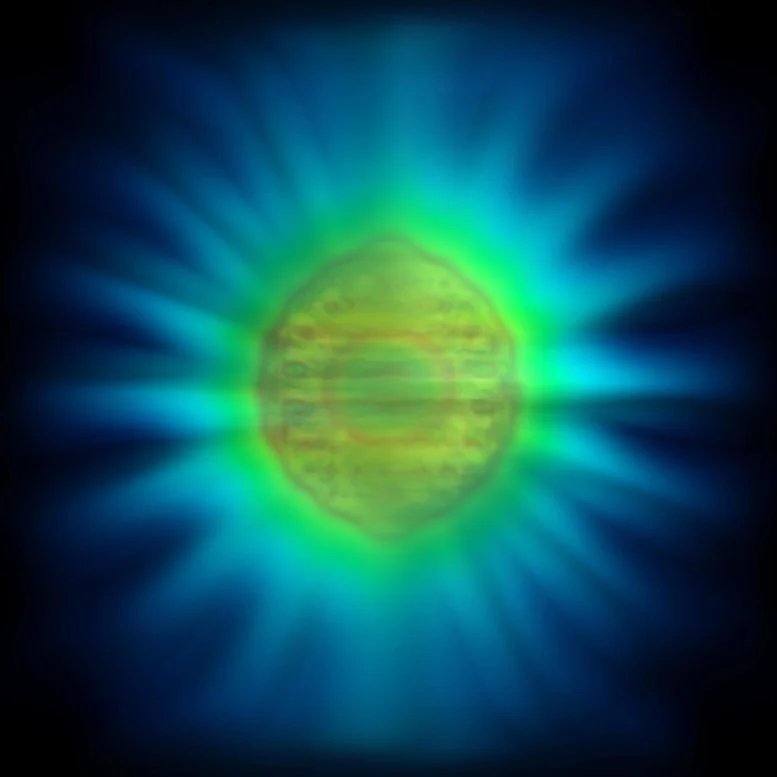
By University of Birmingham November 22, 2024
Collected at: https://scitechdaily.com/quantum-leap-scientists-reveal-the-shape-of-a-single-photon-for-the-first-time/
Researchers have developed a new quantum theory that for the first time defines the precise shape of a photon, showing its interaction with atoms and its environment.
This breakthrough allows for the visualization of photons and could revolutionize nanophotonic technologies, enhancing secure communication, pathogen detection, and molecular control in chemical reactions.
A groundbreaking quantum theory has allowed researchers to define the exact shape of a single photon for the first time.
Scientists at the University of Birmingham, whose work is featured in Physical Review Letters, have delved into the intricate behavior of photons — individual particles of light. Their research reveals how photons are emitted by atoms or molecules and how their shape is influenced by the surrounding environment.
Quantum Challenges and Breakthroughs
This complex interaction gives rise to infinite possibilities for light to exist and move through its surroundings. However, this vast potential makes modeling these interactions an incredibly difficult challenge—one that quantum physicists have been tackling for decades.
By grouping these possibilities into distinct sets, the Birmingham team was able to produce a model that describes not only the interactions between the photon and the emitter, but also how the energy from that interaction travels into the distant ‘far field’.
Visualizing Photons
At the same time, they were able to use their calculations to produce a visualization of the photon itself.
First author Dr. Benjamin Yuen, in the University’s School of Physics, explained: “Our calculations enabled us to convert a seemingly insolvable problem into something that can be computed. And, almost as a by-product of the model, we were able to produce this image of a photon, something that hasn’t been seen before in physics.”
Implications for Quantum Physics and Technology
The work is important because it opens up new avenues of research for quantum physicists and material science. By being able to precisely define how a photon interacts with matter and with other elements of its environment, scientists can design new nanophotonic technologies that could change the way we communicate securely, detect pathogens, or control chemical reactions at a molecular level for example.
Co-author, Professor Angela Demetriadou, also at the University of Birmingham, said: “The geometry and optical properties of the environment has profound consequences for how photons are emitted, including defining the photon’s shape, color, and even how likely it is to exist.”
Dr. Benjamin Yuen, added: “This work helps us to increase our understanding of the energy exchange between light and matter, and secondly to better understand how light radiates into its nearby and distant surroundings. Lots of this information had previously been thought of as just ‘noise’ – but there’s so much information within it that we can now make sense of, and make use of. By understanding this, we set the foundations to be able to engineer light-matter interactions for future applications, such as better sensors, improved photovoltaic energy cells, or quantum computing.”
Reference: “Exact Quantum Electrodynamics of Radiative Photonic Environments” by Ben Yuen and Angela Demetriadou, 14 November 2024, Physical Review Letters.
DOI: 10.1103/PhysRevLett.133.203604

Leave a Reply